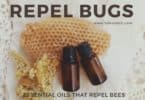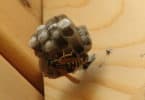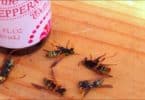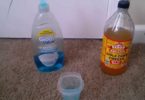Mice are by nature a highly adaptable creature. They can live in many environments, from country homes to city apartments. Because of their very short gestational period, it is possible for one pair of mice to produce up to five thousand offspring in a year. What’s worse, in just six months, one pair of mice can produce an estimated eighteen thousand droppings. Mice can carry diseases, bacteria and parasites that are harmful to humans. There are many things you can do to take care of a mouse infestation in your home. Some products used in the eradication of mice are toxic, which needs to be carefully considered before choosing the methods that are right for you.
Prevention is key.
Start by thoroughly inspecting your home for areas that mice could possibly enter your home. Remember, mice are small, and have the ability to squeeze through extremely small holes. Securely block these portals using such things as caulking or spray foam. If mice can’t get into the home, it almost always negates the need for any other methods of removal. However, a regular inspection of your home is still needed even after you have taken the steps to plug all holes found, because mice are persistent and will oftern find new ways into the home.
Traps are helpful.
Mice are shy and tend to move around a lot more during the evening hours. Setting up traps along walls and behind appliances is a great way to catch mice. There are many different types of mouse traps, including the traditional spring loaded trap, glue traps, and reusable “tip” traps that humanely catch the mouse and allow the more squeamish home owner a method of removal that doesn’t involve killing the mouse. Make sure to try different types to avoid desensitization by the mice. Do not over bait the traps, just a tiny dab of peanut butter makes the mouse work harder to get the bait and in so doing set the trap off more effectively.
Use poisons sparingly.
If you are a pet owner or the parent of young children, using poison to rid the home of rodents is not recommended. Poison is blended with bait that mice find palatable. When the bait is eaten, the mouse usually dies within 48 hours. But this same poison is also extremely toxic to humans and animals alike. Even in tiny doses mouse poison can cause great harm. Another caution, even if you do not own pets or have children: a mouse that eats poison will often crawl away to die. It is quite possible for it to show up in a neighbors home or yard, and then be eaten by the neighbors pet. Depending on the size of the dog or cat, this can often be enough to deliver a fatal dose.
Keep things clean.
Even if housekeeping is not a strong suit, it may be time to adopt better cleaning habits. The hot spot of most homes is the kitchen, since this is where food is stored. Keep items like cereal, flour and sugar in hard plastic containers, and refrigerate items such as butter and bread. Keep things tidy, and try using a bleach and water solution or other antibacterial cleaning product to wipe down counters with. Keep dishes washed and put away and the sink rinsed out and have a secure lid for your trash can. Most importantly keep floors, appliances, and furniture clear of crumbs and other debris.
Don’t wait too long, because usually once one mouse has been spotted, there are more very close by. Sometimes long periods of time can go by and no mice will enter the home. Many factors contribute to this fluctuation, including the changing seasons, drought and even a nearby neighbor moving away, leaving a vacant house in which mice have been thriving unchecked. By following these simple rules, it is possible to control and often completely remove a mouse population from your home.
<>







